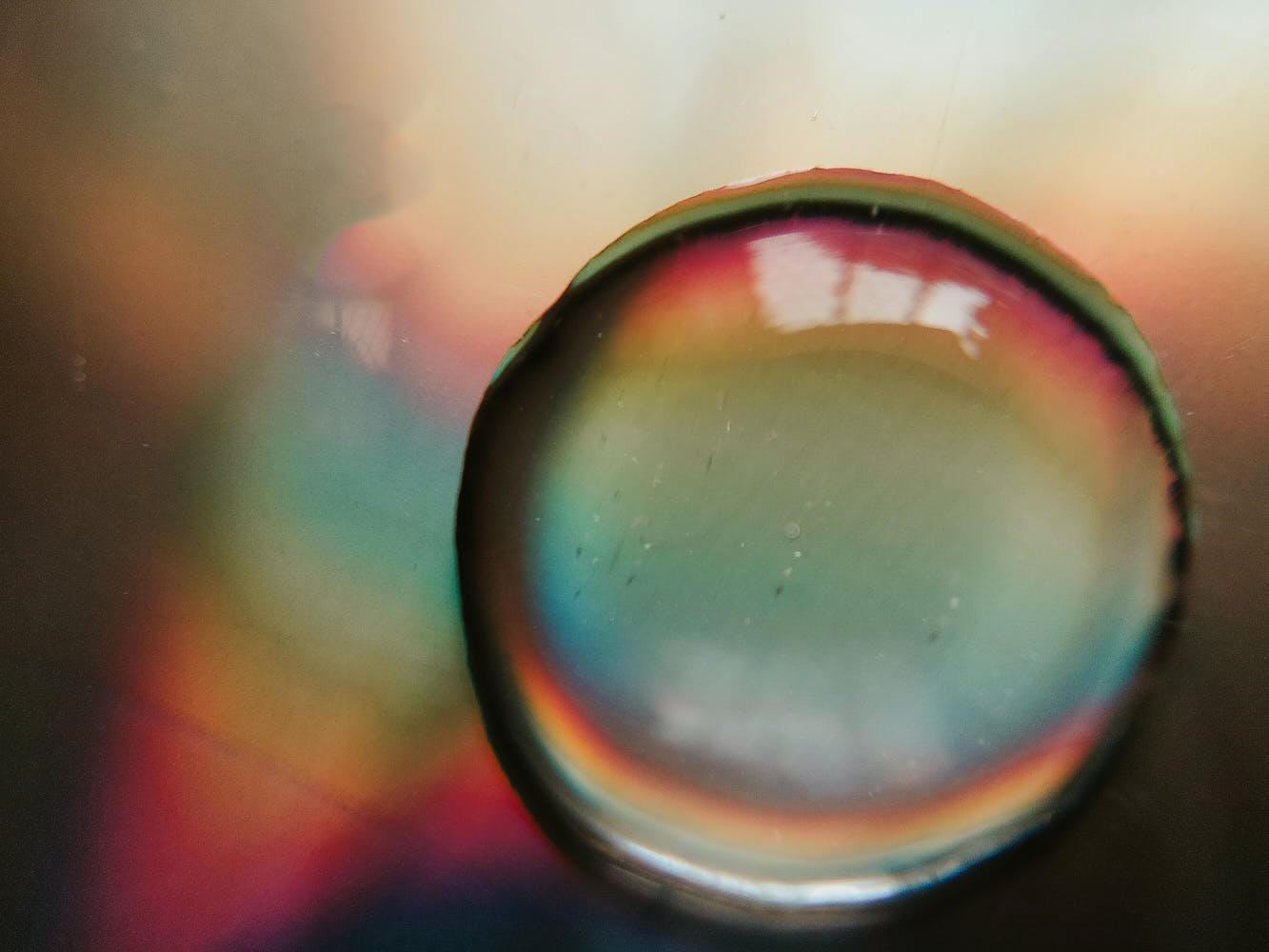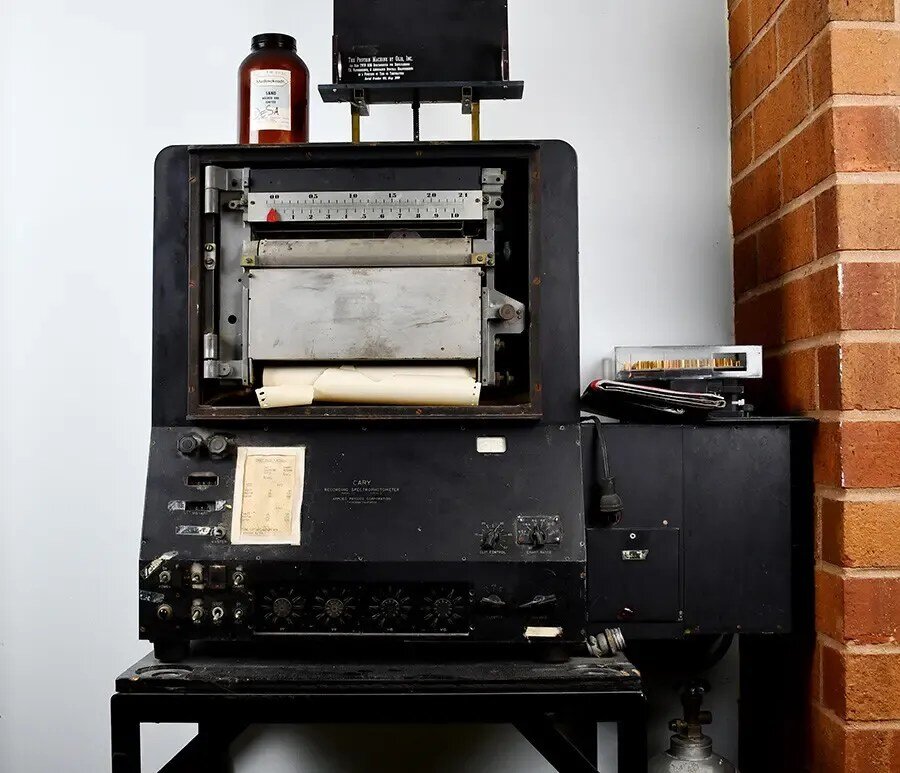
UPCYCLING* THE BEST UV/VIS/NIR SPECTROPHOTOMETERS
* Upcycling – To improve what already exists
You say “NIR,” we say “Cary 14”
“Ageless” is an apt term for the Cary 14and Cary 17. Produced in the late 1950s through 1960s, these prism-grating monochromators were over-engineered even against the very high standards of that era. Like the best heirloom furniture, Cary 14 and 17 UV/Vis/NIR spectrophotometers are as good today as they were decades ago. But, they need to be upcycled. With OLIS Windows 11 electronics and computerization, the resulting upcycled instrument matches or exceeds every performance parameter of modern alternatives in the 185-2600 nm region.
If you own an original 14 or 17 (or an old OLIS or Aviv) we can upcycle yours. If you would like this heirloom-quality over mass-produced alternative, purchase a complete system from us.
See also the OLIS 14F fluorimeter, CLARiTY 17 UV/Vis, and OLIS DSM 172 CD & CPL for other OLIS products employing a classic Cary.
Best results & least waste.
Standard Model Performance
Absorbance UV/Vis/NIR
Download Specifications
Accessories

"Every person I talked to had nothing but praise for the OLIS upgrade [of our Cary spectrophotometer]."
Kevin Schum, CVI Laser
"The files are fine and the OLIS conversion Cary 14 runs as always – perfect."
Geoffrey F. Strouse, University of California, Santa Barbara
"We have enjoyed using your products over several decades to extend the life of a Cary 14, Cary 60 CD and a DW/2. Wishing you all the best in 2021 with your new products."
Gary Girdaukas, University of Wisconsin, Madison
"Our Olis-upgraded Cary 14 spec has worked great for almost 20 years. The service group has been very responsive when we had problems and worked with us to find a very economical solution. Thank you! "
Katherine Walstrom, New College of Florida
"Your niche is an important one …"
Judith Burstyn, University of Wisconsin, Madison
"I can say we love our instrument. We also have an HP instrument and I can't get my students to use it, it might be faster to acquire data off it, but they love the resolution that comes off the OLIS/CARY instrument."
Prof Cory Windorff, New Mexico State University
Why Choose the OLIS Upcycled Cary 14 OR 17?
#1
Best in Class for 185-2600 nm range
#2
Excellent Price! The originals sold for $16,800 in 1969’s. That’s $182K in 2025
#3
Upgradeable in Era and Application for amazing cost savings and waste reduction
They don't make them like they used to
Absolutely every inch of these instruments was made to stand the test of time. With OLIS modernization, you get 100% of the best of today's Windows 11 computerization, reliability, and longevity, while the Cary optics ensure you equal or better of today's sensitivity, spectral range, accuracy, reproducibility, stray light, and more.
Best results & least waste.
Cary Spectrophotometers, Since the 1960s, still the best in class
In 1964, the Cary 14 UV/Vis/NIR was the best spectrophotometer available then and many will argue best even today. Several thousand Cary 14s and years later the optically equivalent Cary 17 were sold. Among the very earliest requests from OLIS clients was the computerization of these superb instruments. Nearly 50 years later, you will find we continue to utilize these prism-grating monochromators in modern absorbance, fluorescence, CD, and CPL spectrophotometers.
All OLIS instruments with the numeral 14, 17, 170, or 172 employ the ageless optics and chassis of a classic Cary 14 or 17.
Adjusted for inflation, $16,800.00 in 1964 is equal to over $182K in 2025. Quality is expensive. And long-lived. No Cary 14/17 needs to be discarded. All should be upcycled.
The Cary 14 was not Howard Cary’s first product. The original dual beam UV/Vis/NIR model was the Cary 11, dating to 1948. The US Smithsonian owns serial number 2. We own serial number 1, gifted to us by Oak Ridge National Laboratories many years ago. Come visit us in Athens, Georgia, and you’ll find this piece of history in our office foyer.
Not sure if you should choose a diode array, CCD, or scanning spectrophotometer?
Reading this may help.
Converting an OLIS 14 UV/Vis/NIR to a CLARiTY 17 UV/Vis involves replacing the original dual beam detection hardware with a new chamber, sample holder, and detector. See the CLARiTY pages for doing absorbance on suspensions as well as clear solutions, Uv/Vis for all light absorbing samples (CLARiTY) — OLIS CLARiTY
Convert your OLIS 14 to the CLARiTY 17













